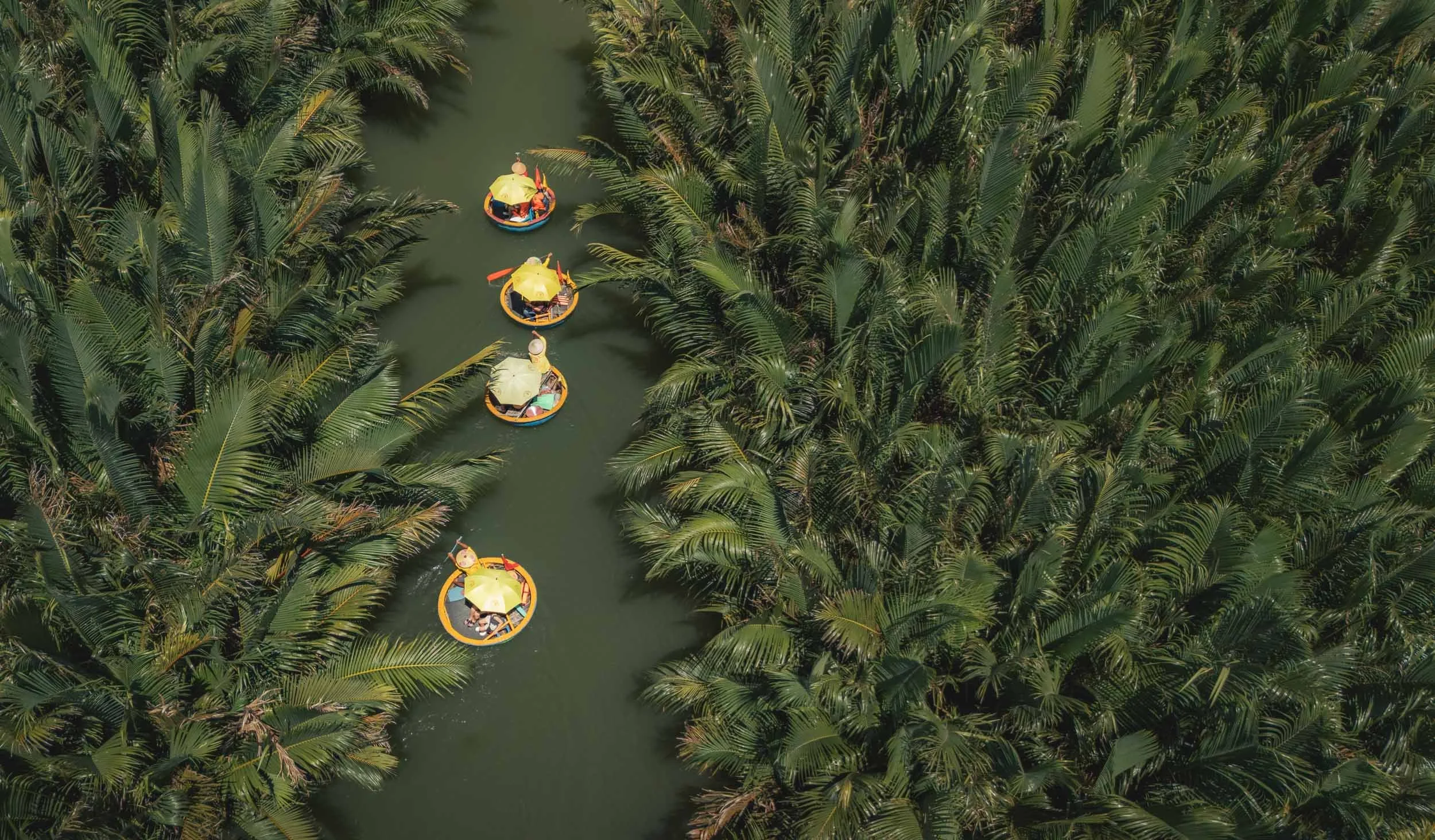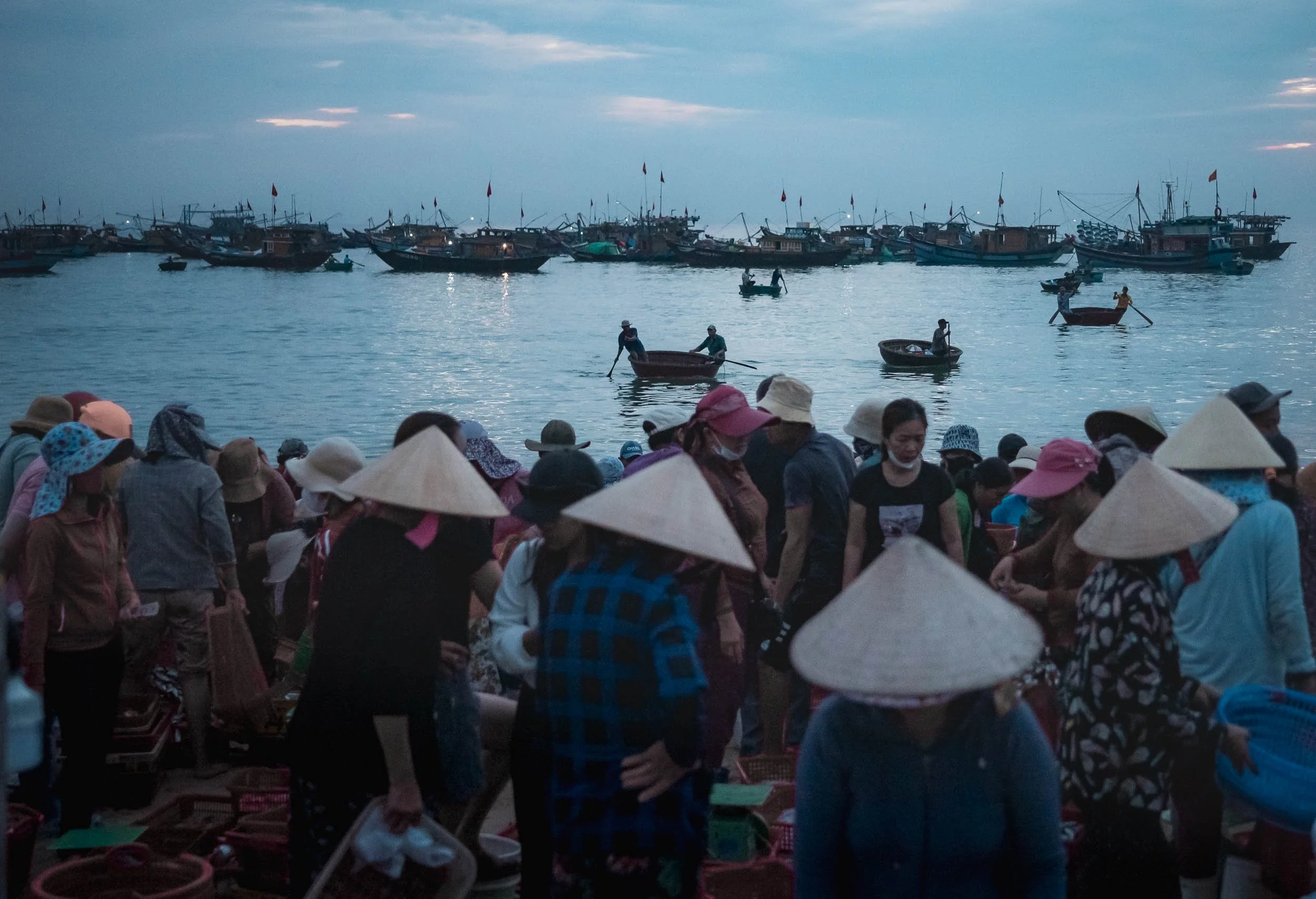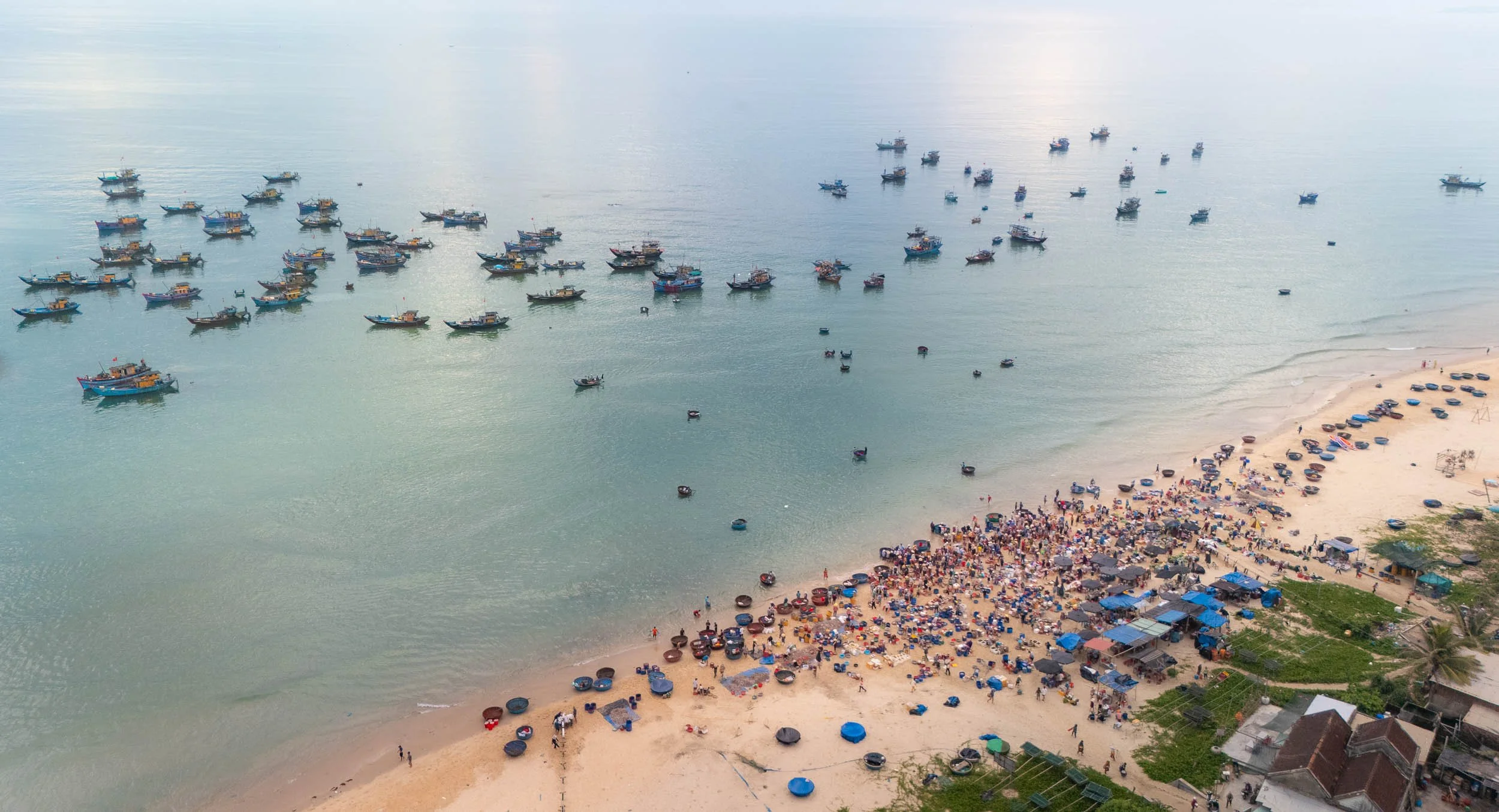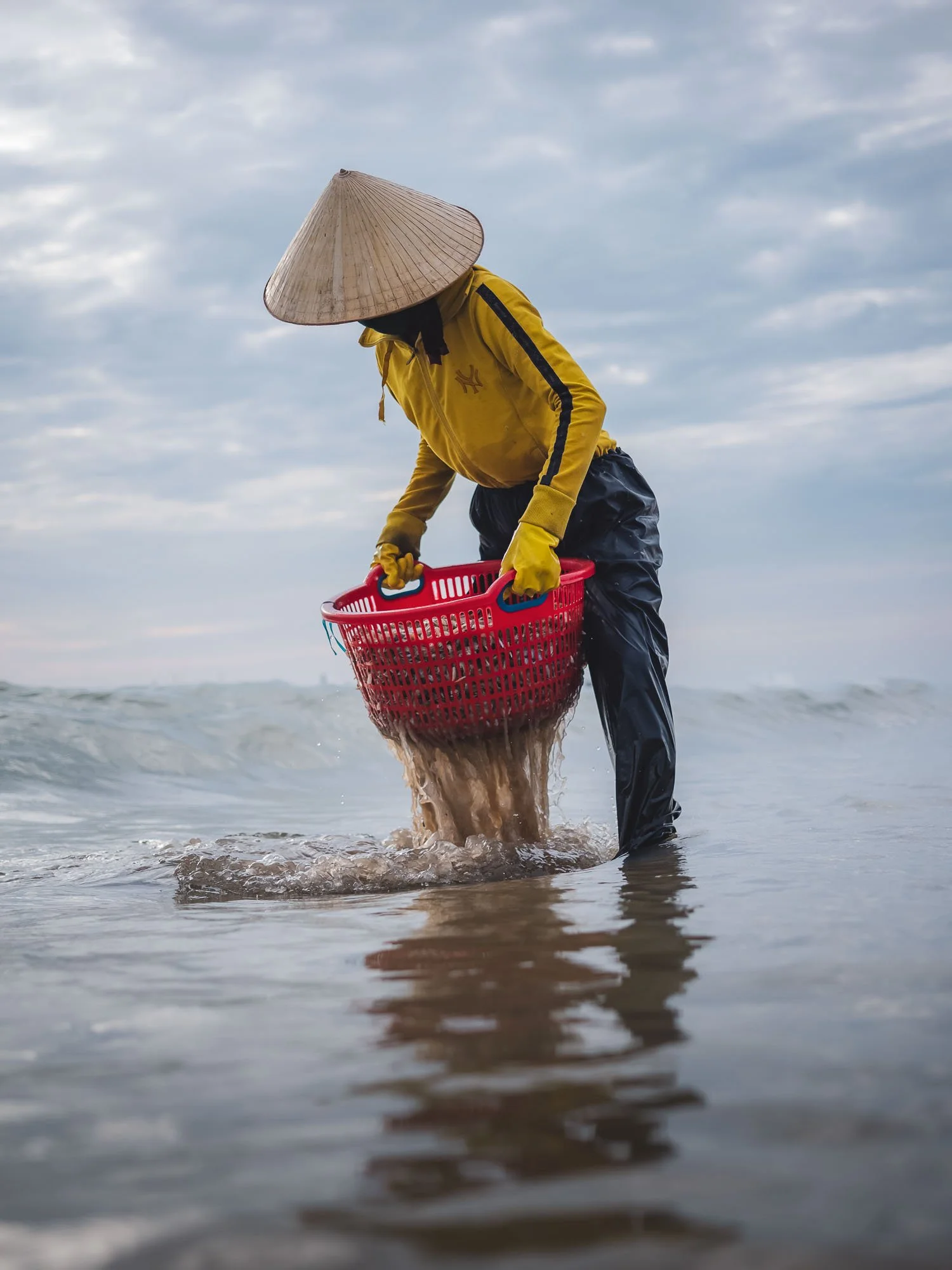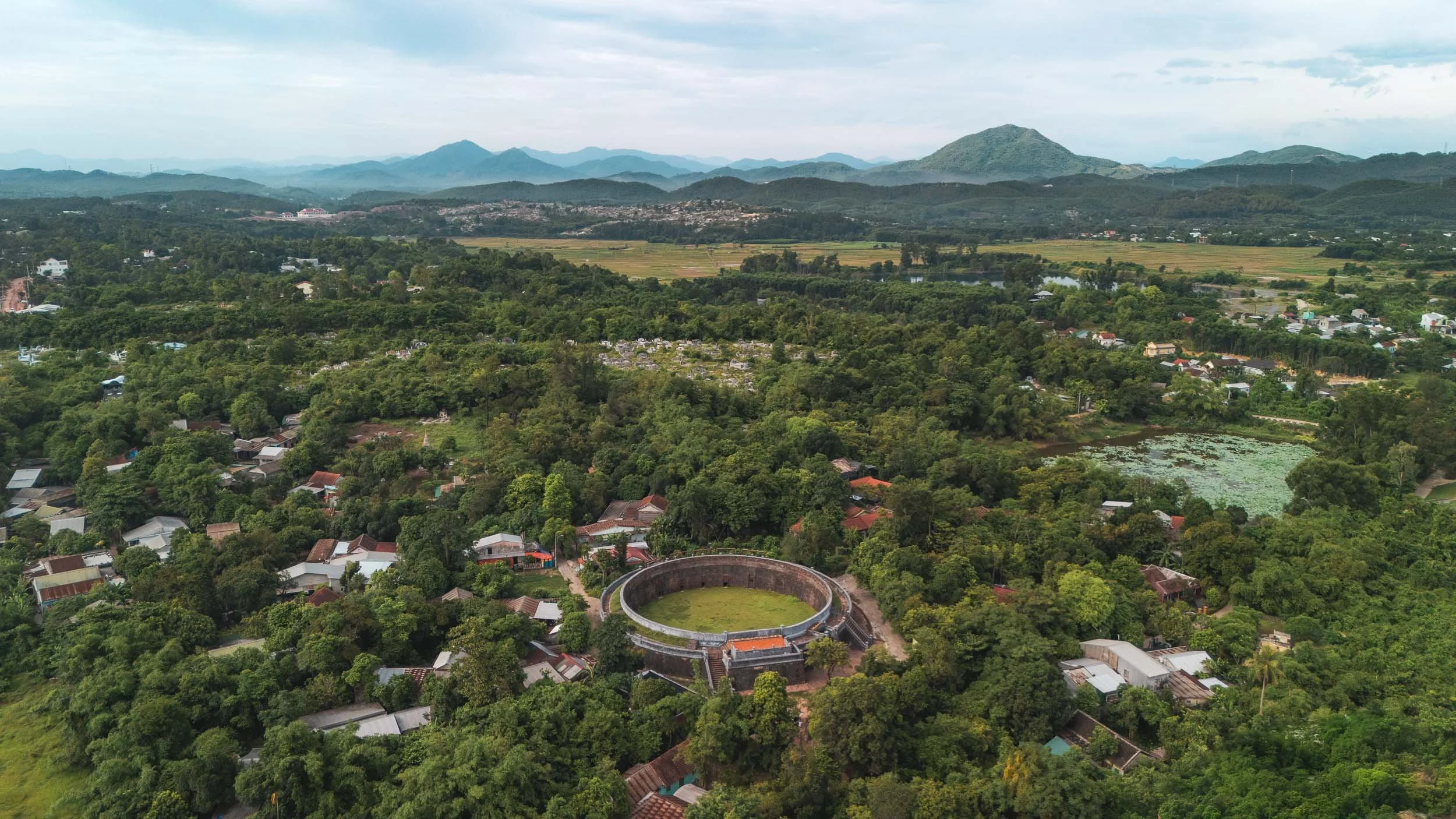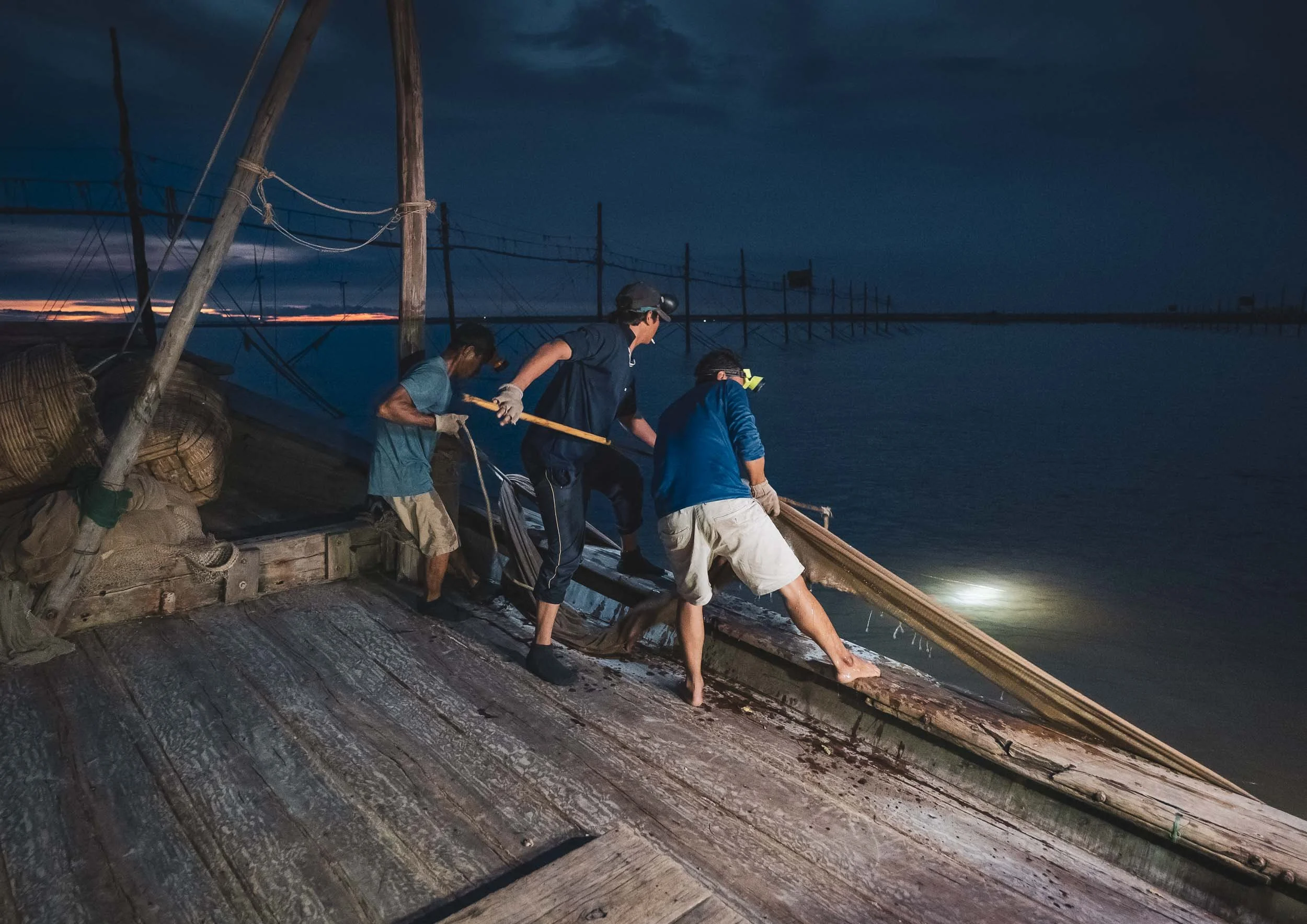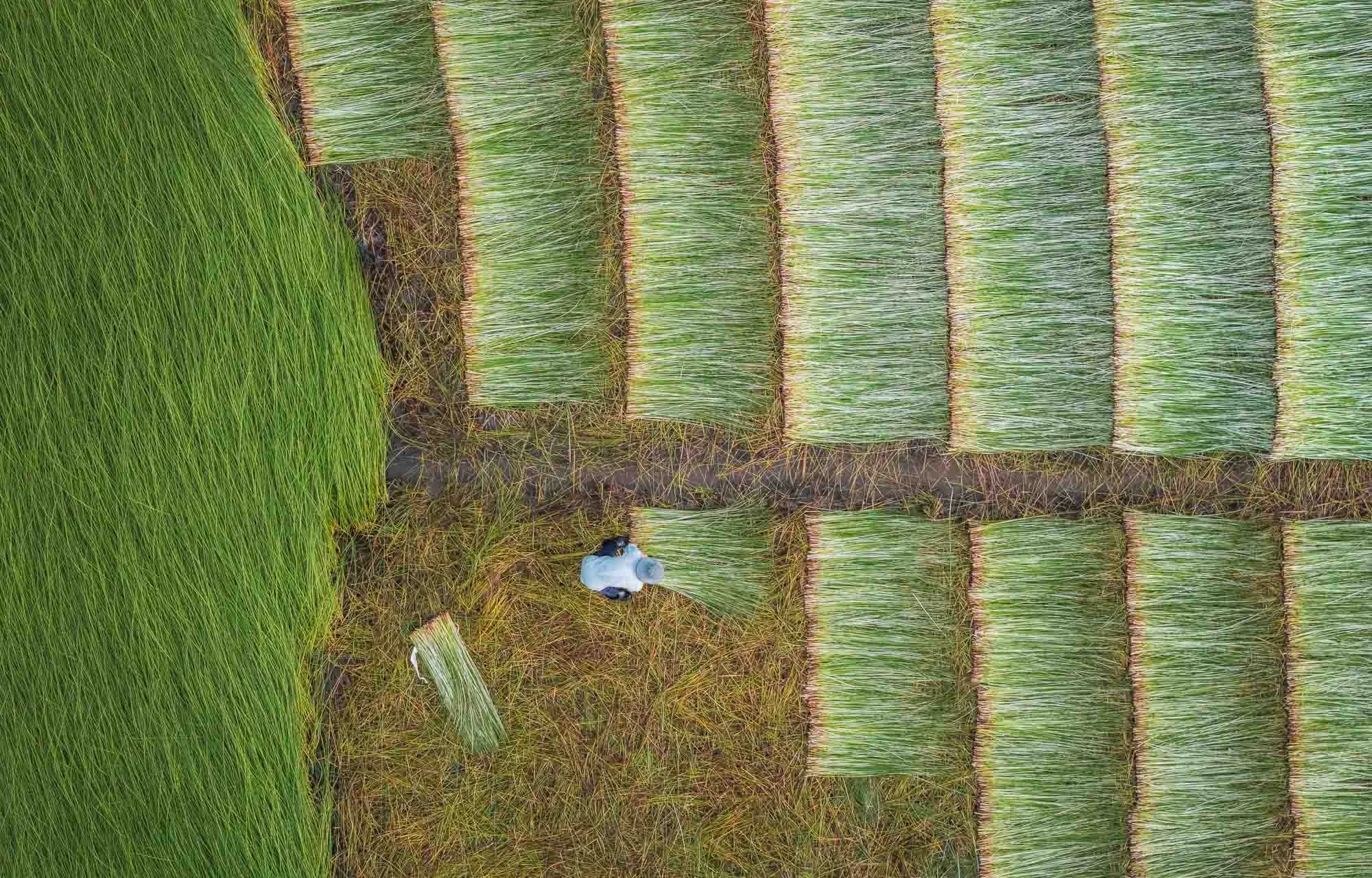Hue & Hoi An - A Glimpse of Central Vietnam
The sights of Hue and Hoi An were my focus for central Vietnam, where I only had a few days after covering the south and on my way to the north. One of my favourite countries in South East Asia.
Vietnam is one of my favourite South-East Asian countries, and for this reason I spent more time here than originally planned. Starting in the southern part of the country, I made my way north with a stop in the central cities of Hue and Hoi An. It was a short stopover, so the below blog covers just three days of exploring the sights here - but I already know there is a lot more to see, for example, the city of Da Nang (Vietnam’s Miami, so I heard and partly saw while driving through) and several amazing natural sights further inland. I still wanted to see the northern parts - blog coming soon - so some compromises had to be made.
If you want to get an overview of many of the sights I was able to cover during this trip, check out this video, which has aerial clips from southern, central, and northern parts of the country.
Hoi An - Ancient Trading Port
From the airport in Da Nang the first stop was the Bay Mau coconut forest just outside the city, to see its infamous basket boat rides. While today this place is definitely a tourist attraction more than anything else, many such sights are rooted in specific traditions of the past. This one is not so different.
The bamboo-made basket boats are actually part of the historic roots of Hoi An as a trading and fishing port, and while the stories of their origin vary, one interesting angle is that they were used to evade taxes that the French levied on “real” boats. Others say they developed as a way to easily maneuver during shallow water fishing - either way we will see them again later in this blog in a less touristy context.
If you look past the entertainment aspect of the captains twisting and turning their boats with quite remarkable skill, accompanied by a speaker blasting Gangnam style (yep), you can have quite a relaxing time here, and get an insight into the activity’s cultural background.
That’s because once you escape the beats and dancing of the main parts of the river - where admittedly both locals and tourists seem to have a lot of fun, although I can't quite say the same for myself - you can enjoy some of the more quiet side channels with their vibrant coconut groves, and things become a lot more relaxed.
From what the guide told me, the forest here covers almost seven acres (also the meaning of Bay Mau) and was started more than 200 years ago. It’s the combination of soil and brackish water that seems to have made it a fertile area for coconut. It was once also a hotspot for the resistance of the Vietnamese against the colonial occupation.
The forest is close to the sea along the Thu Bon river, a few kilometers from the old town. It’s worthwhile to visit, if you can appreciate the historic value in the context of today’s tourist activities.
Blue Nets
From here, I visited another place that is mainly driven by photographic opportunities for tourists than real day to day life - this is a theme in many of the famous places in Vietnam.
The iconic blue net mending scenes of Hoi An are rooted in the region’s traditional fishing culture, once a vital part of the so-called “Silk Road of the Sea.” Historically, it was often the women who repaired the nets after the men brought them back from the sea. While this practice still exists today, many of the images circulating online are staged - including these ones. Personally, I don’t feel strongly against this practice, these reenactments help preserve a visual heritage and generate income for locals. At the same time, they distort the perception of daily life and contribute to a growing uniformity and commodification in travel photography, with people chasing identical scenes simply to check them off a list. The trade off is probably somewhere in the middle and tourism is part of local dynamics in so many ways regardless, but generally I mostly avoid staged images, or at least declare them as such.
The inside of the house, where the ladies mend the nets when things are not set up for beautiful photos - with some joy either way it seems!
The fisheries at the Thu Bon river, with the house of the net mending ladies just on the left side.
As a piece of evidence indicating the importance of fishing and the sea for the locals, just to the left of the above panorama lies Bon Van Duy Vinh - a boat-shaped temple.
The Old Town of Hoi An
I spent the evening exploring Hoi An’s old town. The town’s history as a trading hub goes back over 2000 years, from the Cham people, to Portuguese and French influences, and Vietnamese rule, with later decline. Only a few decades ago the town was revived and became a UNESCO World Heritage Site in 1999.
In the evenings, the many bars and restaurants attract people, as do the colorful boats and the traditional lantern release on the river. A beautiful sight from the air, showing the clear distinction between the old town and the newer part of the city across the river bank.
From a closer angle, its rise from irrelevance came at a cost: nowadays, tourism around the old town and river areas have put significant pressure on the sustainability of the city and its surrounding marine ecosystem.
The city is famous for lanterns, especially the monthly full moon festival for prosperity and good fortune, honoring the ancestors.
Irrespective of the festival, they adorn many of the streets, handmade lanterns are for sale in several shops, and tourists release small floating versions with candles in the river (with questionable environmental consequences).
Away from the river, I got a few glimpses of the mixed traditional architecture and chessboard-pattern streets that made the old town famous.
It’s a colorful but crowded affair, and I told myself I’d come back the next morning to see it under a different light…
Tam Tien Fish Market
But before that, it was a very early start to reach the fish market of Tam Tien, around an hour south of Hoi An.
The market flurry starts at 4am or so, and slowly dies out after sunrise. It runs from April to September, but closes during the monsoon season.
This was also my second encounter with the basket boats - this time not for touristic use, but their original purpose: bringing the nightly catch from the larger boats docked off the coast directly to the beach - it’s a bumpy journey, even in calm waters.
It is mostly the women who are then responsible for preparation, negotiation and sales, while the men go back and forth to transfer the fish between the boats and the beach. Things happen quickly, and most of the haul is picked up by buyers within just a few minutes.
While the market feels very traditional, it was only established about 20 years ago or so. Initially, the boats just anchored here after returning from their nightly mission until a few business-minded fishermen realised they could sell the freshest fish to buyers directly on the beach. It’s now the largest fish market in the Quang Nam Province.
To keep the catch cold, the community installed a metal track to send large chunks of ice from the road down to the beach.
I took some of my favourite photos of the trip here with the drone, capturing the colorful activities on the shoreline from above. A worthwhile visit, with very few tourists around - so far.
We made our way back to the "peaceful meeting place" - the translation of Hoi An from Sino-Vietnamese. I was keen to see the city during the day, and the early hours also meant there were very few people around.
The many rooftop cafes were a good place to get a view of the typical narrow and deep two-story houses, often mixing the local traditional architecture with wooden porches and some colonial influences.
A Chinese influence are the community halls, such as Fujian Community Hall from 1792, with its courtyard and decorated gardens.
One of its most iconic architectural sights is the Japanese bridge - currently covered and under renovation because it is at risk of sinking due to erosion. It was established in the late 16th century by Japanese merchants to ease the crossing of the canals connecting different city districts. A small temple with ornate decorations was added in the centre later, but little is visible with the current works going on.
As I walked back to the hotel, I stopped in a small antiquities shop and got talking to the owner. When he found out I was German, he proudly showed me his copy of Faust, which he had been reading - and quoting from - in Vietnamese, no less. After a brief philosophical exchange, during which I couldn’t help but wonder why anyone would voluntarily read Goethe’s novels, while I was busy recalling my dread of them back in school, I had to head off to my next destination.
Huế
And that destination was Hue, another ancient city once belonging to the Cham people, before Vietnamese rule, where it was an Imperial City. It is also home to a UNESCO site…
.. which is in fact a complex of multiple different monuments, spread over several square kilometers along the bank of the perfume river (named after the seasonal orchards that are carried in the river water).
Like Hoi An, it includes features from the Vietnamese dynasties, Chinese influence, and also some colonial French aspects.
As I arrived at the Meridien Gate, some young women were posing in traditional dresses and gave me the chance to take a few photos of them with the backdrop of the 1833 entrance to the Imperial City.
The site is huge with many different tombs, shrines, palaces, and other remnants of the time when Hue was the capital of unified Vietnam in the early 19th century - you could easily spend a full day here, which I unfortunately wasn’t able to do.
The Thai Binh Lau (Peace Pavilion) above within the Forbidden Purple City, with its beautiful ornamentation restored in the early 1990s. The entire complex features green gardens and a large moat surrounding the area, seen below.
Details of the buildings, often featuring lattice windows and ceramic statues with colorful painted decoration.
Kiến Trung Palace
Architectural details of one of the main palaces of the site, combining traditional and colonial influences. Originally built in the early 1900s, it was destroyed during the Indochina wars, and then reconstructed just a few years ago.
In fact, a lot of the complex has been destroyed during the Indochinese wars, but restoration projects are ongoing. On the other hand, its current state - especially in moody weather and around the wilder parts - admittedly gives a kind of intriguing Indiana Jones vibe to the area.
Lantern Release
As the light faded, I had one more short photographic scene on the agenda - and it was another famous “Vietnam setup” that is often seen on social media - a more picturesque version of the river lantern release in Hoi An.
A cute idea, but little to do with the reality, as we’ve seen.
I did however get to see this super intense sunset over Hue - nothing artificial about this one.
Before heading to the airport for a flight to Hanoi, I had one more rather unusual and less well-known sight on my agenda, maybe the only one of its kind. While Hue is home to several historic sites spread all around the region, including a number of beautiful temples and pagodas, this one is without comparison.
Hổ Quyền (Tiger Arena)
Barely visited, this relic lies just a few hundred meters from the perfume river, and was home to one of the most intense (and cruel) spectacles of the Nguyen dynasty. In the second half of the 19th century, gladiatorial battles between elephants and tigers took place here during yearly royal festivals.
For better or worse, its doors remain closed today, unfortunately also for visitors, so the best perspective of what the arena looks like is the aerial view.
Apparently the complex was built after several incidents during previous festivals, where elephants trampled people and tigers escaped, going after spectators or the royal attendees.
The original purpose of these fights was to train the elephants used in battle, but it later became a purely entertainment-driven event.
The last festival took place in 1904.
While exploring the surrounding areas (which include a rather beautiful old temple and mausoleum) I encountered this gentleman, and he kindly showcased his craft: producing amazing hand-carved wooden elements for the various restorations.
And with that impression of how much work must have gone into some of these sights, I made my way to the airport. Stay tuned for a future blog post covering the north of Vietnam, with amazing tea plantations, limestone landscapes, and of course the country’s capital.
Subscribe to my newsletter to get notified and don’t miss out on more Wonders of the Globe.
Other Recent Posts:
Sights of Southern Vietnam
I managed to explore quite a bit of Vietnam over almost 4 weeks in mid 2024 - here is the first blog, starting with its economic centre Hi Chi Minh city and the beautiful Mekong delta.
In late spring of 2024 I explored another Asian country, spending four weeks in Vietnam. What was initially planned to be a bit more of a slow travel trip as I had plenty of work to do, turned out to be as intense as always, and I ended up exploring Ho Chi Minh City, the Meklong Delta, Hue and Hoi An, Hanoi and some of its surroundings, and the northern mountainous regions as well as Cat Ba bay. Although I didn’t spend a lot of time in each part, all of that definitely won’t fit into a single blog post, so this will be the first of three, starting with the south: Vietnam’s economic capital, and the Meklong river delta region.
“Saigon”
Ho Chi Minh’s colloquial and historic name is Vietnam’s largest city, with over 10 million inhabitants.
Panoramic photos of the Bến Thành Market in the city centre, with its iconic clock tower and a rather rare French Indochinese design. It is one of the oldest surviving buildings in the city, having operated for more than 100 years. Great views from the nearby Silverland Ben Thanh hotel with its amazing rooftop restaurant!
Train Vibes
Although it’s Hanoi that is famous for its train street - more on that in another blog - Ho Chi Minh has its own cute corners where the tracks runs through the city quarters. I’m a fan of trains, and can’t deny that the idea of the multi-day train journey from HCMC to Hanoi or back appeals to me…
Of course, the primary means of transport here are scooters though. There are very few place in the world with a higher scooter / person ratio than HCMC, and it shows in the organized chaos on the roads, and is also evident by the noise levels. Unfortunately, most south-east Asian cities have not undergone the transition of all two-wheeled transport to electric models, which brings incredible quality of life improvements - see my trip Beijing.
Walking through the city is enjoyable - people are friendly, and there are interesting compositions for street photography all around, for example in the famous Japan town - a quiet place during the day, but it comes to life at night, so I’ve been told…The group above was enjoying their weekend around the markets at An Quang Buddhist Temple and immediately invited me for a drink and some karaoke (both not my favorite pastimes, so I just said hi for a little).
The Church of Tan Dinh
Just over 10% of the population are Christian (almost half follow traditional folk religions or are not religious), but there a number of churches to be found in HCMC. Aside from this pink gothic marvel, the Notre Dame Cathedral is another, but was closed and covered for renovation during my visit. Strangely, this one is very strict about access: only catholics allowed inside - but even that did not help me as a tourist! Exterior photos only.
Phap Hoa Pagoda
Another beautiful religious building is this buddhist temple, uniquely combining Vietnamese and Chinese architectural styles, situated on the channel running through the area north of the city centre - quite a nice place to walk around and explore. Buddhism makes up the largest of the major religions in the country.
HCMC is a growing busy place, and the infrastructure is suffering accordingly - yet I found it quite pleasant to explore (aside from the usual humidity), with lot of large trees, many smaller streets, and less imposing highways than for example Jakarta and Bangkok. Much of the city centre follows an open square or radial-concentric grid system, while the surrounding areas are somewhat less strictly organized and consist mainly of denser low and mid-rise buildings. A defining feature are city’s famous roundabouts, where the rules are difficult to understand for any foreigner.
The city is dotted with greenery, and several of its roads are tree-lined, given them an avenue-like feeling, probably in part a heritage of the French colonial times. Nowadays, they act as source of shade (it makes a difference of several degrees C in urban centers), aside from their aesthetic appeal.
Landmark 81
To the east of the city by the Sai Gon river, a new modern district has developed over the last decade, including South East Asia’s second tallest building, only surpassed by KL’s newly completed Merdeka 118: Landmark 81. I can’t say I find it architecturally appealing - its Neo Futurism reminds me a of a boxy less elegant version of Burj Khalifa.
Architectural Oddities.
Not far across the river is this rather odd building and associated establishment - its claim to fame is derived by the borrowed name and logo only though.
Although I spent a few more days here, visiting more of the city’s landmarks such as the late 19th century Saigon Central Post Office seen here, the Opera House, the Skydeck at the (architecturally more pleasing than Landmark 81) Bitexco Financial Tower, and could probably fill a whole blog entry with the corresponding photos, southern Vietnam has more to offer than Ho Chi Minh City…
To the Mekong Delta
…and so I embarked on a three day roadtrip you’ll see documented below.
The Hang Pagoda of
the Khmer People
The Khmer ethnic group arrived to the area more than 4000 years ago, and is primarily present in what is today Cambodia, but over 1 million live in the Mekong delta area of Vietnam as well.
More than a 1000 years ago the Khmer empire dominated the area for over 500 years, and was responsible for many of the famous temples of Angkor. Today they follow a variant of Buddhism, and many of their temples can be found in the Tra Vinh area, this one being around 300 years old.
Aside from its beautiful golden ornamentation, the Hang temple is also famous for its wood sculpture and clay workshop, where skillful monks build out the intricate statues and decorations for the temple by hand.
Interior Vibes
The inside is normally not accessible, but we got lucky and a monk opened the doors for us - and even turned on the somewhat incongruous LED light around the central Buddha altar for added effect (complete with strobes and changing colours).
A Day At Sea
After a quick stop at the temple and another stop to get some of Vietnam’s famous coffee (which is essentially stretched with condensed milk, making it so sweet even I drink it), we arrived to our first primary destination, the shores of the Eastern Vietnamese Sea, where the Bassac (or Hau) river, a branch of the Mekong, meets the ocean. The goal? To spend a day at sea with a group of local fishermen, witnessing one of the primary ways of live shaping their culture, alongside the cultivation of rice.
Unlike many tours on the rivers here (and many other photography-specific arrangements, more on that below), this day was not set up to please tourists, but we were simply following their routine of going out to sea and collect the catch of the day, getting a real feel for what their job is like. The crew was really accommodating and gave us the chance to document their techniques, despite the hardship of the work.
After cruising for about an hour away from the shore on the boat, we reached their destination, a set of wooden pillars in the sea, connected by thin planks, with an occasional tiny hut in between. These are not traditional floating houses you might find on the river banks or near the shore: they are meant to be temporary accommodations, where the fishermen take turns to live for a few days or even weeks, tending to the nets that are attached to the poles with ropes in a kind of semi-permanent fish trap.
Waiting Game
We did arrive a little earlier than they normally do, giving us the chance to take some daylight and sunset photos while the fishermen rested. They typically haul in their catch a few hours after sunset, to take advantage of the natural behavior of fish and maximize the effectiveness of the nets - plus, it means the fish are as fresh as possible for the early morning market.
The Fishing Watchtowers
In this area, the traditional stilted huts stand in contrast to the huge concrete wind towers that part of the renewable energy farms built here over the last decades, taking advantage of the strong winds in this corner of the Vietnamese coastlines. As the sun set, the fisherman living in the hut came out, walking along the thin planks between the poles and preparing their nets to be lifted.
I sent my drone up during a few minutes of beautiful light - luckily the sea and winds were calm. Flying from a boat over the ocean is not always easy, read more about it on my recent drone photography book (German only, sorry!).
At this point, it was slowly time to let the crew focus on their job, and our ship moved closer, while the fishermen currently living in the little huts started to prepare the nets, dragging them out of the water.
Pulling the Nets in
The crew then took the nets by the edges attached to the buoys and pulled them into the boat - the harder the task, the better, because that means they’re full of fish.
Nightly Work
For the fishermen on the stilts, conditions to stay out here are tough. No running water or permanent electricity, rough weather conditions, isolation, and of course the actual work, make this a difficult job.
Once the net was pulled into the boat, wooden baskets were prepared to empty the contents into - hopefully without letting too much of the catch escape, although one or the other creature managed to find a way.
Emptying the nets into the baskets required the full strength of three crew members - more than a dozen times they repeated this process.
Afterwards the nets are lifted back to the fisherman staying on the wooden stilts, spread out, and prepared for the next catch. A few more supplies were exchanged with the poor soul left behind to manage and monitor the nets, while the crew makes its way back to shore with their catch (reasonably successful, so I was told).
After almost 10h at sea we were back on land, headed to a small hotel for a few hours of sleep before sunrise, exploring more of the interesting ways of life in the Mekong Delta.
Sedge Grass Patterns
My next destination was on land tough. The Khmer people are also known for planting sedge grass in this area of the delta, which is used to make baskets or mattresses and similar handicraft items. The wetlands of the delta are a fertile ground for this plant to grow up to 2m in length. After a short exploration, we found a beautiful field with some local workers - as the grass is laid out to dry, the harvest season brings with it beautiful patterns when viewed from above.
I had the chance to get a little closer as well and observe the locals in their work - they set up small sheet tents or use the traditional hat to protect themselves from the sun, and run the grass through a little roller machine as a first pass at removing the water, before spreading it on the ground to dry.
Staying Safe
Gloves are essential to avoid scratches as they grab the grass and pull it through the machine - I experienced that first hand when I tried the process.
Pottery Patterns
From here, I visited a local pottery factory - another place for interesting photographic opportunities. The process starts with the production of the clay from the Mekong river, filtered and kneaded to make it moldable.
The clay is then moulded by hand using a potter’s wheel, and turned into vases, pots, or decorative items by these skilled ladies getting paid per piece. Sometimes items for mass production are also shaped via mold casting, but in this factory it was all made by hand.
From Above
The resulting pieces are first air-dried on the large factory floor for several days, getting their final polish with sandpaper.
When I told the lady I’d like to fly a drone over her head for this photo, she was clearly very amused but happily obliged.
After that, the products are hardened in these massive brick kilns, often for several days, until they are fully dried out.
The factories utilize mounds of rice husks to fire the oven - a byproduct of the rice milling that happens in the region and perfect to provide slow, consistent heating, that is ideal for drying the clay. Huge amounts are stored here - my guide for scale.
The Red Brick Kingdom
Following the path of the local clay industry, we made our way to Mang Thit village in Vinh Long, long known for its brick factories stretching along the channels for kilometers, seen here in this panoramic view as heavy clouds rolled in during the late afternoon.
Quiet Times
The area has been thriving for over a hundred years, supported by the availability of cheap fuel for the kilns, and plenty of clay in the nearby streams, which then also serve as transport route for the finished products - primarily bricks. Nowadays, only a few of the factories are still active, and many have been standing still for years, or just attract tourists.
It’s not difficult to find the working factories though - dark smoke emitting from the small chimneys is the giveaway, and the workers are very welcoming and happy for you to come in for a chat and take photos - an opportunity I did not miss.
I got to observe their process, separating the clay, shaping the bricks using simple tools, and using conveyers, carts, or even small bikes to move them through the factory before they’re placed in the kilns for several weeks.
One of the active factories from above, and another one with some of the boats used to transport clay and bricks along the channel.
It’s of course sad to see that these traditional methods are slowly replaced by industrial production - the area is definitely a cultural landmark for the region with its unique architectural charm, not to forget the kittens I saw.
Nightly Storms
After we left, the stormy clouds decided to slowly empty their contents, but not before a few beautiful lighting strikes, captured here from the parking lot of our dinner spot.
Water Lilies
The rains didn’t last long and by the next morning the sunrise greeted us with beautiful light to photograph another local tradition: the collection of water lilies, typically happening during the floating season from September to November.
Disclaimer: I am normally not a fan of “arranged” photography, but as the time of my visit didn’t coincide with the right period to see this practice, and my guide happened to know the women who normally harvest the lilies, it was an easy decision to go for it anyway. As a result, these photos are the result of purposeful posing and arrangement of the flowers, rather than the natural harvesting practice.
The lilies are collected for their stems, which are used in various dishes, while the flowers are turned into Buddhist offerings. Aside from their use for humans, the lilies actually play an important role in the ecosystem, as they absorb excess nutrients and provide habitat for fish and insects.
Into the Water
While the drone views of these neat flower circles have been taken before, I tried to also get a few different perspectives and got into the water for some portraits - a welcome refresher as temperatures rose, but on the other hand my feet needed a real deep clean after wading through the muddy ground.
Although this scene has been excessively romanticized, mostly during organized photo tours and the resulting social media coverage, it does hold some understandable appeal: the flowers are beautiful and the ladies with their conical hats and small wooden boats make for nice subjects.
A Final Pottery Stop
We made our way back for the 6h drive to Ho Chi Minh City, with one last brief stop - another pottery factory, closer to the outskirts of the city.
This one has a rather interesting feature, which are dedicated shallow ponds to remove the clay from the soil in the ground and process it, seen here from above, with a long row of bowls laid out next to them to dry in the sun.
Breakage happens even to the best of them, as evident below, but that doesn’t take away the smile of the local workers here.
That’s it from the south of Vietnam - subscribe to get notified for the central and northern parts!


